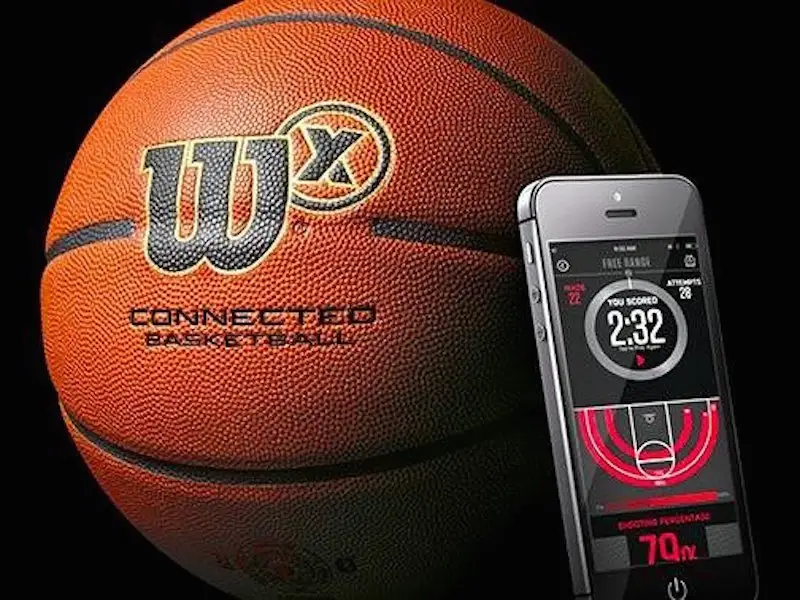Blog
“The Science Behind High-Tech Sports Equipment”
In the world of modern sports, technology has played a major role in enhancing performance, safety, and efficiency. From advanced materials to smart sensors, high-tech sports equipment has revolutionized the way athletes train, compete, and recover. The science behind this cutting-edge gear involves a deep understanding of physics, materials science, biomechanics, and engineering. In this article, we’ll delve into the science behind high-tech sports equipment and how it contributes to better performance, injury prevention, and the overall advancement of sports.
1. The Role of Materials Science in Sports Equipment
One of the most important scientific advancements in sports equipment has been the development of new materials that improve performance and durability. Advances in materials science have led to the creation of lighter, stronger, and more flexible gear, making it possible for athletes to perform better while reducing the risk of injury.
Key Materials:
- Carbon Fiber: Known for its strength and lightweight properties, carbon fiber has become a popular material in sports equipment such as bicycles, tennis rackets, and golf clubs. It provides an excellent strength-to-weight ratio, meaning it can withstand high impact without adding extra bulk. Carbon fiber’s stiffness also enhances energy transfer, allowing athletes to generate more power with less effort.
- Titanium: Titanium is highly durable and resistant to corrosion, which makes it an ideal material for items like golf clubs, tennis rackets, and bike frames. Titanium’s lightweight nature allows for faster movement without sacrificing strength, helping athletes maintain speed and control.
- Synthetic Polymers: High-tech synthetic materials such as Kevlar and Dyneema are used in sports like football and hockey for protective gear. These materials offer superior strength and flexibility, providing athletes with increased protection from high-impact collisions while remaining lightweight.
- Smart Fabrics: Fabrics embedded with sensors or conductive materials are becoming increasingly popular in sports clothing. These fabrics can monitor an athlete’s vital signs, such as heart rate or body temperature, in real time, providing crucial data for performance optimization and injury prevention.
By harnessing the unique properties of these advanced materials, sports equipment is now more durable, responsive, and tailored to the specific needs of athletes.
2. Aerodynamics and Sports Equipment Design
Aerodynamics is the study of how air interacts with solid objects, and it plays a crucial role in sports that require high-speed movement, such as cycling, motorsports, and swimming. The design of sports equipment takes aerodynamic principles into account to reduce drag, increase speed, and improve efficiency.
Key Concepts:
- Streamlined Shapes: Aerodynamic designs reduce air resistance, allowing athletes to move faster and more efficiently. In cycling, for example, bikes and helmets are designed with smooth, rounded edges to minimize drag. Similarly, swimmers wear specially designed suits made from materials that reduce friction with the water, allowing them to glide more easily through the pool.
- Wind Tunnels: Engineers use wind tunnels to test and optimize the aerodynamic properties of sports equipment. By simulating real-world conditions, designers can assess how different materials and shapes will perform under high-speed conditions and make adjustments accordingly.
- Formula 1 Racing: In motorsports, particularly Formula 1, aerodynamics is a key factor in car design. F1 cars are built with an emphasis on reducing drag and maximizing downforce. The result is a car that can navigate corners at high speeds while maintaining stability and traction on the track.
The science of aerodynamics has led to more efficient, faster, and more competitive equipment in sports where speed and precision are crucial.
3. The Science of Impact Absorption
In contact sports such as football, rugby, and hockey, managing the forces generated during impacts is critical for preventing injuries. High-tech equipment is designed to absorb and dissipate these forces to protect athletes while allowing them to perform at their peak.
Key Technologies:
- Shock-Absorbing Materials: Modern protective gear, such as helmets, shoulder pads, and mouthguards, incorporates materials like foam and gel to absorb and dissipate impact energy. For example, polyurethane foam is often used in helmets to reduce the force of a collision, preventing head injuries like concussions.
- Cushioning Systems: In footwear, cushioning systems such as air or gel-based soles are used to absorb shock and reduce the stress on joints during activities like running or jumping. These systems are designed to return some of the energy from each stride, making movement more efficient while reducing the risk of strain or injury.
- Impact-Resistant Materials: Sports gear such as knee pads, elbow guards, and shin guards are often made from materials like high-density polyethylene (HDPE), which provide excellent impact resistance. These materials are designed to flex upon impact, dissipating energy before it can affect the athlete’s body.
The integration of advanced materials and shock-absorbing technologies in sports gear has been crucial in reducing injury rates, allowing athletes to engage in high-risk activities with greater protection.
4. The Integration of Smart Technology in Sports Equipment
The rise of wearable technology and smart sensors has transformed sports equipment, allowing athletes to track their performance in real time and make data-driven decisions about their training and recovery. Smart equipment not only provides valuable feedback but also helps coaches and medical professionals monitor an athlete’s health and condition more accurately.
Key Features:
- Performance Monitoring: Smart sports gear, such as smart basketballs or tennis rackets, contains embedded sensors that can track data like speed, spin, and accuracy. This data is then sent to a smartphone or other device, allowing athletes to analyze their performance and make adjustments.
- Wearable Devices: Fitness trackers, smartwatches, and heart rate monitors are commonly worn by athletes to track metrics such as heart rate, calories burned, sleep quality, and steps taken. These devices use sensors to collect data and provide insights into an athlete’s physical condition and progress.
- Biomechanical Feedback: More advanced wearables, such as smart insoles and motion-capture suits, analyze biomechanics and provide feedback on an athlete’s movement patterns. This data can help athletes adjust their technique, prevent injury, and optimize performance.
The integration of smart technology into sports equipment is transforming how athletes approach their training, performance, and recovery. It also enables coaches and medical professionals to better understand the physical demands placed on athletes, leading to improved injury prevention and long-term health.
5. The Role of Biomechanics in Sports Equipment Design
Biomechanics is the study of how the human body moves and the forces involved in those movements. By applying principles of biomechanics, designers can create sports equipment that enhances an athlete’s natural movements, optimizing performance and reducing the risk of injury.
Key Concepts:
- Ergonomics: Sports equipment is increasingly being designed with the athlete’s body mechanics in mind. For example, a tennis racket may be engineered to reduce shock and vibration through the handle to minimize strain on the wrist and arm. Similarly, running shoes are tailored to the natural motion of the foot, with different designs for pronation and supination to provide proper support.
- Muscle Efficiency: Equipment such as lightweight bicycles or running shoes with energy-returning cushioning systems allows athletes to move more efficiently, conserving energy while improving speed. For example, carbon fiber in bicycle frames enhances power transfer, allowing cyclists to go faster with less effort.
- Joint Protection: Biomechanics also plays a role in creating protective gear designed to support joints during intense physical activity. Knee braces and ankle supports are designed with biomechanics in mind, ensuring that they provide stability without restricting movement.
The study of biomechanics has led to better-fitting, more comfortable, and more effective sports equipment that works with an athlete’s body rather than against it.
Conclusion
The science behind high-tech sports equipment is a fascinating blend of physics, materials science, biomechanics, and engineering. Advances in these fields have led to the creation of gear that improves performance, enhances safety, and allows athletes to reach their full potential. Whether it’s through the use of cutting-edge materials, the application of aerodynamic principles, or the integration of smart technology, the evolution of sports equipment has been driven by a deep understanding of the human body and the physical forces involved in sports. As technology continues to advance, we can expect even more innovations that will push the boundaries of what athletes can achieve.




